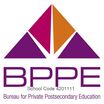
By Sean Riehl, C.M.T.
Performing an assessment before a massage session while the client is standing is the optimal way to evaluate your client, reach an agreement and create a treatment plan.
If a standing assessment doesn’t happen, here are some quick and easy assessment techniques you can perform while the client is on the table in a prone position. You could even do these tests during a relaxing spa massage and gain valuable information while not disturbing the client.
Doing these tests will give you information about where to work to be the most effective, as well as give you and your client something to work toward in future sessions.
Spring test for vertebral mobility
With the client prone, use the thenar eminence of your palm to apply a springing pressure to each of the spinous processes of the vertebrae. Do this in about eight spots up the spine to get a quick overview of spinal mobility. Apply quick downward pressure and then release. Start at the lower lumbar and move up the spine all the way to the upper back. Direct pressure straight down toward the table at 90 degrees to the body. (In massage school we are always taught to stay off the spinous processes, but applying this gentle pressure is perfectly safe.)
This is a very general mobility test of each of the vertebrae, and by using this test you can get a quick evaluation of your client’s back health. On a healthy back, each of the vertebrae will move independently. On a back that lacks mobility, multiple vertebrae will move as a column. If the muscles have been tight for a long time, this begins to translate into the facet joints and disks, causing them to become less mobile, and move as a group.
By testing joint movement, you can tell if your muscular work is going to be really effective, or is going to take multiple treatments over a long period of time. For example, if someone has back pain with tight muscles and all the vertebrae move as a column, then you know it is going to take longer to relieve the dysfunction. If you see a client with back pain and tight muscles, but the vertebrae have normal mobility, you know that relieving the muscles will often fix the issue.After testing about five people, you will start to get a sense of what is normal.
- See more at: http://www.massagemag.com/easy-assessment-techniques-for-clients-prone-on-the-table-30675/#sthash.OufJmBdF.dpuf
Performing an assessment before a massage session while the client is standing is the optimal way to evaluate your client, reach an agreement and create a treatment plan.
If a standing assessment doesn’t happen, here are some quick and easy assessment techniques you can perform while the client is on the table in a prone position. You could even do these tests during a relaxing spa massage and gain valuable information while not disturbing the client.
Doing these tests will give you information about where to work to be the most effective, as well as give you and your client something to work toward in future sessions.
Spring test for vertebral mobility
With the client prone, use the thenar eminence of your palm to apply a springing pressure to each of the spinous processes of the vertebrae. Do this in about eight spots up the spine to get a quick overview of spinal mobility. Apply quick downward pressure and then release. Start at the lower lumbar and move up the spine all the way to the upper back. Direct pressure straight down toward the table at 90 degrees to the body. (In massage school we are always taught to stay off the spinous processes, but applying this gentle pressure is perfectly safe.)
This is a very general mobility test of each of the vertebrae, and by using this test you can get a quick evaluation of your client’s back health. On a healthy back, each of the vertebrae will move independently. On a back that lacks mobility, multiple vertebrae will move as a column. If the muscles have been tight for a long time, this begins to translate into the facet joints and disks, causing them to become less mobile, and move as a group.
By testing joint movement, you can tell if your muscular work is going to be really effective, or is going to take multiple treatments over a long period of time. For example, if someone has back pain with tight muscles and all the vertebrae move as a column, then you know it is going to take longer to relieve the dysfunction. If you see a client with back pain and tight muscles, but the vertebrae have normal mobility, you know that relieving the muscles will often fix the issue.After testing about five people, you will start to get a sense of what is normal.
- See more at: http://www.massagemag.com/easy-assessment-techniques-for-clients-prone-on-the-table-30675/#sthash.OufJmBdF.dpuf


 RSS Feed
RSS Feed



